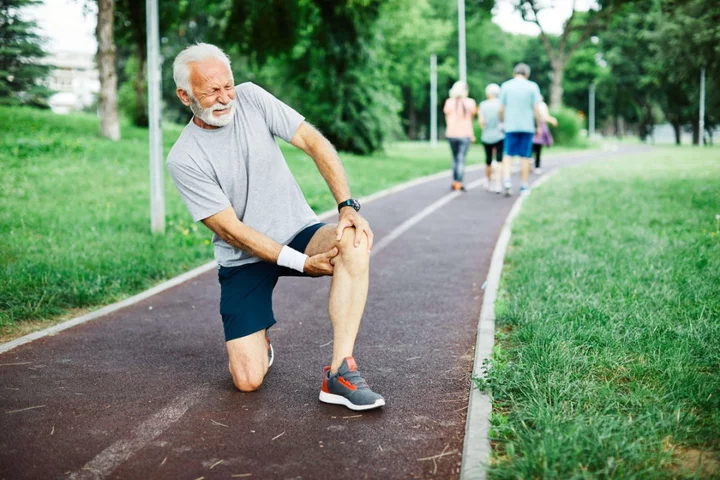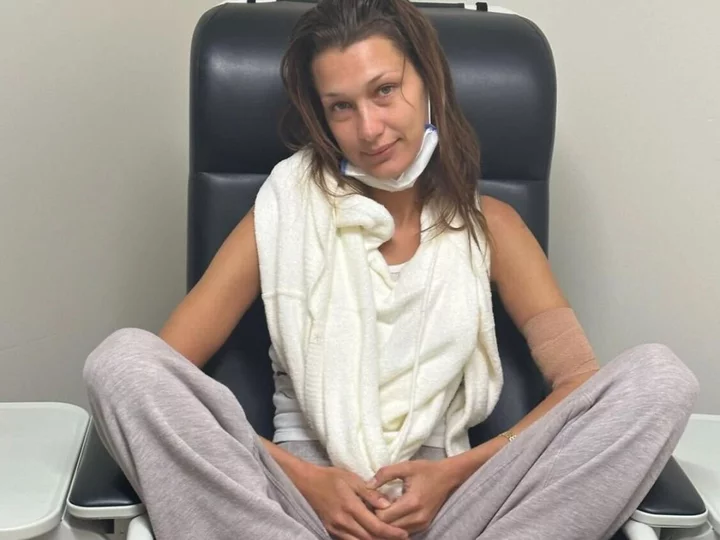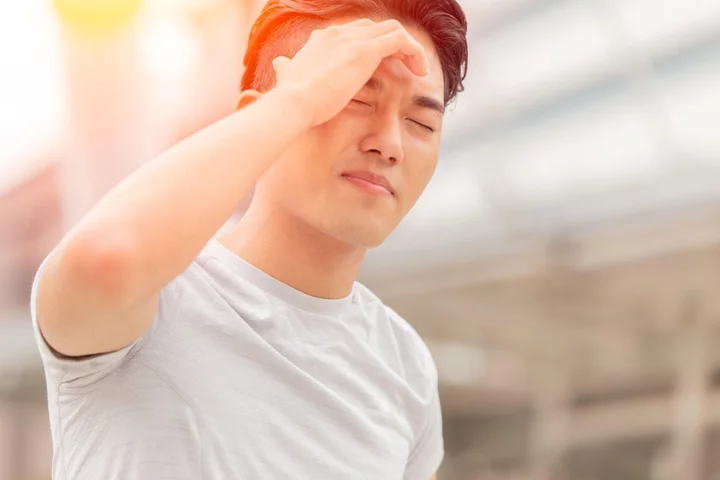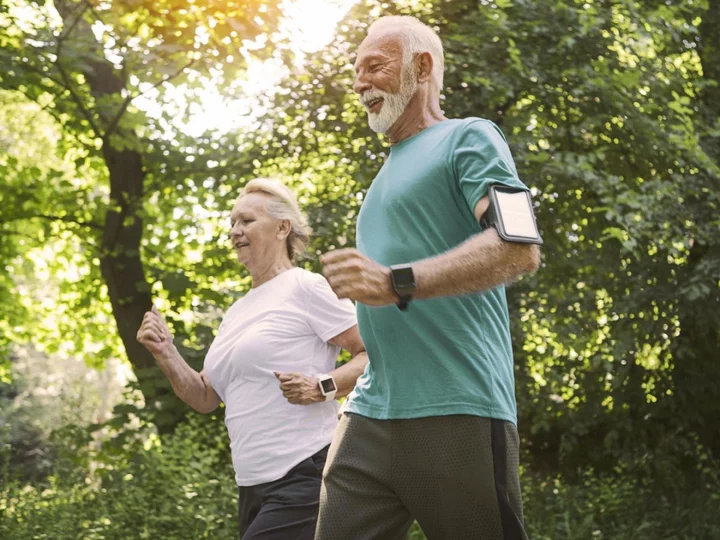
What is Lyme disease? Bella Hadid reveals ’15 years of invisible suffering’
Model Bella Hadid recently shared an update on TikTok, that her Lyme disease symptoms had flared up following a tooth infection. The Dutch-Palestinian 26-year-old was diagnosed with Lyme disease in 2012, and in her latest health update, shared she was struggling with its symptoms once again. “There was a low-grade infection underneath the tooth, next to the tooth I thought was suffering (she’s good) which is the one I got a root canal on a year ago. It continued to spread down, causing a low-grade infection in my jaw,” Hadid shared on TikTok. She continued by saying: “Please listen to your bodies my friends! This made my Lyme flare up, which means the Lyme is attacking the places that are suffering i.e. tooth, jaw, gut, brain, spine, bones etc oh, and the entire nervous system.” So, what is Lyme disease? “Lyme disease is an infection caused by a group of bacteria transmitted through an infected tick, giving you a specific set of symptoms,” says Dr Sanjay Mehta, GP at the London General Practice. According to analysis published in the open access journal BMJ Global Health, more than 14% of the world’s population probably has, or has had, tick-borne Lyme disease. But Mehta says you can’t catch it from any tick, only infected ones. The disease can also be seasonal – “It doesn’t die down to zero, but it drops significantly during summer and winter, and peaks during early autumn and spring,” he says. What are the symptoms? Lyme disease can manifest in a variety of different ways – from being asymptomatic, to nerve damage, in more severe cases. “There are two main groups of patients,” says Mehta. “First, there’s the group who catch it early, and they don’t really get any symptoms – they just see they’ve been infected by a tick. “Then there’s the second group of people who don’t get treatment, and although only a very small percentage of them actually end up with symptoms, they are the ones we worry about. “Those patients tend to get three stages of symptoms. First, they might get flu-like symptoms kicking in a week or so after the bite, and a characteristic rash. Second, some might then get symptoms related to their nerves, their heart and their brain, several weeks or months later. “An even smaller number of people might then get the third stage, and these are the symptoms people typically associate with Lyme disease – long-term joint problems and neurological symptoms.” How do you contract Lyme disease? As Lyme disease is passed on exclusively via infected ticks, you can downgrade the disease from unlikely to highly unlikely by avoiding tick-heavy areas or taking precautions within them. “There are areas of the UK known to harbour infected ticks, like the Lake District, the New Forest, the North York Moors, and the Scottish Highlands,” says Mehta. “If you see ticks on your skin, you don’t necessarily get transmission for up to four hours, so if you can remove them, that’s ideal.” If you are going to any of these areas, there are also a few simple things you can do to limit the risk. “Try to keep to paths in grassy, wooded areas, and keep away from long grass and vegetation,” advises Mehta. “It sounds obvious, but shower on your return – often ticks fall off – and check yourself for them too. Wear insect repellent, long T-shirts, and long trousers if possible.” What should you do if you get bitten? The simple answer is, if you’ve gone to a high-risk area and you know you’ve been bitten by something, see a doctor. “It is worth going on to treatment, which is a course of specific antibiotics,” says Mehta. “We do run tests, and the tests are fairly reliable, but the main things are a) have you gone to a risky area? b) have you seen you’ve been bitten? And c) have you developed symptoms?” “The take-home message is to seek medical help if there is a bite, but be aware, it’s only a small percentage of people who end up with problems.” Read More Charity boss speaks out over ‘traumatic’ encounter with royal aide Ukraine war’s heaviest fight rages in east - follow live Study reveals how muscle cells deteriorate with age, hampering injury recovery Tips and tricks to preserve your harvest Is it heat exhaustion or are you just tired?
1970-01-01 08:00

Study reveals how muscle cells deteriorate with age, hampering injury recovery
Researchers have revealed how muscle cells deteriorate with age, affecting their ability to regenerate and recover after an injury. The findings could help to shed light on why it takes people longer to recover from muscle damage as they age. A team at Nottingham Trent University analysed the genes inside muscle cells, and found the ‘development pathways’ – the different ways in which genes work together to regenerate muscle – become weakened in older cells. We know that healthy muscle regenerates after we’ve had an injury but ageing impairs that regeneration potential and recovery gets harder the older we get Dr Livia Santos, Nottingham Trent University Lead researcher Dr Livia Santos, an expert in musculoskeletal biology in Nottingham Trent University’s School of Science and Technology, said: “This goes some way towards explaining why muscle injuries may take longer to recover as we get older.” She added: “We know that healthy muscle regenerates after we’ve had an injury but ageing impairs that regeneration potential and recovery gets harder the older we get. “What we’ve observed, in terms of what happens inside the cells, helps us to better understand why we don’t heal as well or as quickly in older age. “The pathways that control cell processes and development work differently in older cells and are downregulated, meaning regeneration is impacted the older we get. “If we can understand these pathways, however, we could potentially identify new therapies and interventions to mitigate the problem.” The researchers developed a new approach to examine muscle cells in the laboratory to enable them to observe the different mechanisms that drive muscle ageing. They studied muscle cells from donors, chemically injuring cells after they had been donated and isolated, then assessing how they heal and regenerate back to their pre-injury baseline levels. When they looked at cells from a 20-year-old and a 68-year-old donor, researchers found distinct differences in the development pathways of the younger and older cells. While younger muscle cells fully recovered from the injury, the team found that in older cells the genes expressed less of what they needed to, leaving the cells no longer able to perform in the way they should. According to the researchers, this contributes to reduced regeneration capacity leading to thinner, less robust ‘myotubes’ – a type of cell that can fully develop into a muscle fibre. Muscle regeneration is a complex and finely balanced biological process and is known to deteriorate with ageing, leading to the decline of musculoskeletal health and in some cases metabolic and genetic diseases. Our work enables us to examine muscle cell regeneration across the lifespan and this in turn could be key for future drug discovery for disease related to muscle ageing Researcher Janelle Tarum Janelle Tarum, another researcher on the study, said: “We’ve been able to develop a new approach to assess muscle regeneration which involves a state-of-the-art technique called RNA-sequencing. “There’s a very clear reduced regeneration capacity and weakened recovery of aged cells and we have been able to further understand the factors underlying this impairment. “Our work enables us to examine muscle cell regeneration across the lifespan and this in turn could be key for future drug discovery for disease related to muscle ageing.” The study, which also involved Manchester Metropolitan University and Liverpool John Moores University, is published in the Journal of Tissue Engineering and Regenerative Medicine.
1970-01-01 08:00

Bella Hadid looks back on ‘15 years of invisible suffering’ with Lyme disease
Bella Hadid has shared a candid post reflecting on her health journey as she has lived with Lyme disease since 2012. The 26-year-old supermodel shared a health update with her 59.3 million followers on Instagram on Sunday (6 August) and said she is “finally healthy” after more than a decade of struggling with her health. She shared a number of photographs taken during her treatments over the years, showing her receiving drips and injections, laying in hospital beds as nurses gave her medication, and health documents from her medical record. In her lengthy caption, Hadid wrote: “The little me that suffered would be so proud of grown me for not giving up on myself. Living in this state, worsening with time and work while trying to make myself, my family and the people who support me, proud, has taken a toll on me in ways I can’t really explain.” “To be that sad and sick with the most blessings/privilege opportunity/love around me was quite possibly the most confusing thing ever,” she reflected. She reassured fans that she was “OK and you do not have to worry”, and said that despite her struggles, she “wouldn’t change anything for the world”. “If I had to go through all of this again, to get here, to this exact moment I’m in right now, with all of you, finally healthy, I would do it all again. It made me who I am today,” Hadid continued. The model, who was named one of Time magazine’s 100 most influential people in the world this year, “promised” fans who were also struggling that things “will get better”. “Take a step away, stay strong, have faith in your path, walk your truth and the clouds will start to clear up,” she wrote. “I have so much gratitude for and perspective on life, this 100+ days of Lyme, chronic disease, [co-infection] treatment, almost 15 years of invisible suffering, was all worth it if I’m able to, God-willing, have a lifetime of spreading love from a full cup and being able to truly be myself, for the first time ever.” Hadid explained that she chose photos that were “the most positive” throughout her health journey in an attempt to illustrate how it has been “the most enlightening experience of my life filled with new friends, new visions and a new brain”. She thanked her mother, Yolanda Hadid, who was also diagnosed with Lyme disease in 2012 alongside her son and Hadid’s younger brother Anwar, for “keeping all of my medical records, sticking by me, never leaving my side, supporting, but most of all, believing me through all of this”. Hadid also thanked the brands and companies she has worked with, her agents for “protecting me”, and her medical team, adding: “I love you SO much!!!” She told fans that she would be “back when I’m ready”, adding: “I miss you all so much. I love you all so much.” Lyme disease is a bacterial infection that can be spread to humans by infected ticks and if usually diagnosed based on symptoms, which include fever, headache, fatigue or skin rash, or laboratory testing. Earlier this year, Hadid spoke about some of the symptoms she gets when her Lyme disease flares up. In a TikTok video, she said: “My skin changes colour, I break out randomly, I get (what feels like) lesions, lethargy, chronic anxiety, zero motivation or purpose, leaky gut, adrenals, depression.” She added that she “hates looking in the mirror or taking pictures” of herself because of how the disease impacts her appearance. “If I’m all dolled up, maybe I’ll try for the girls but, man, is it hard to do this as your profession while also feeling/looking sick like this,” she said. Read More Doing things alone isn’t ‘self-love’ – we don’t need to make everything empowering Jamie Foxx and Jennifer Aniston issue statements over ‘antisemitic’ Instagram post Will Smith says daughter Willow’s ‘mutiny’ changed his view on success Is it heat exhaustion or are you just tired? Will Smith says Willow ‘mutiny’ changed his view on family success Health expert Dr Michael Mosley shares two tips for avoiding osteoporosis
1970-01-01 08:00

Is it heat exhaustion or are you just tired?
Whether you’re away on holiday or lounging in the sun at home, needing a siesta after lunch or a disco nap before dinner on a hot summer’s day is normal. But how can you tell when warm weather-induced drowsiness is something more serious? We asked doctors to explain… What is heat exhaustion? “Prolonged exposure to the heat can cause heat exhaustion. It is the body’s response to excessive loss of water and salt,” says Dr Preethi Daniel, deputy medical director at London Doctors Clinic. “Symptoms may be characterised by heavy sweating, rapid breathing, headache, high temperature, nausea, a faster and weak pulse, light-headedness, feeling fatigued and heat cramps.” Older people, babies, children and those with chronic illnesses are much more likely to develop heat exhaustion. “Symptoms are usually the same in adults and children, and can make children tired and floppy,” says Dr Luke Powles, associate clinical director at Bupa Health Clinics. While not life-threatening, heat exhaustion is a warning sign that you need to cool down promptly to prevent progression to heat stroke, which means getting out of the sun immediately. “Remove any unnecessary clothing, lie down and raise your feet so they are above the level of your heart and drink plenty of water,” says Powles. “You can also use a cool sponge to cool your skin. Make sure someone stays with you until you feel a bit better – which you should do in half an hour or so.” If you don’t start to cool down after 30 minutes, see medical help, as you may have developed heatstroke. What is the difference between heat exhaustion and tiredness? “Heat exhaustion is the direct result of spending too much time in the sun and often raises your core body temperature to over 38 degrees, which isn’t an indicator of general tiredness,” says Dr Carolyn Barshall, GP at independent charitable hospital King Edward VII’s. “Whereas tiredness can be caused by many lifestyle factors such as disordered sleeping patterns, alcohol and poor diet.” Daniel adds: “If you have a lack of energy or aches and pains, consider it tiredness, but if you have any of the other symptoms mentioned above, it could be heat exhaustion.” What is heatstroke? “Heatstroke is the end result of overheating,” says Daniel. “Our internal temperature rises and creates confusion, drowsiness and can lead to seizures.” Much more serious than heat exhaustion, it can cause a change in mental status such as, Barshall says: “Confusion, delirium, combativeness, seizures, loss of consciousness, and a core body temperature above 40 degrees.” Symptoms may also include skin that’s not sweating even when it feels hot, fast breathing or shortness of breath. “Heat exhaustion and heatstroke are often confused, but there is a difference,” says Powles. “Heatstroke should be treated as an emergency, whereas with heat exhaustion, the person needs to be cooled down.” If you suspect someone has heatstroke you should call 999 or seek emergency help immediately. How to stay safe in the sun To prevent heat exhaustion during summer, it’s important not to spend too long in the sun and to stay hydrated. “Avoid direct sunlight between 11am and 3pm, and wear light-coloured, loose clothing,” says Daniel. “Drink plenty of cold drinks and water throughout the day and limit alcohol intake.” To help little ones, she says: “You can keep a pram or buggy cool by covering it with a damp cloth and refreshing it every 30 minutes.” Read More Charity boss speaks out over ‘traumatic’ encounter with royal aide Ukraine war’s heaviest fight rages in east - follow live King Charles enjoys a wee dram at the Met Highland Gamesv Why have the birds disappeared from my garden? Top Films: w/c Saturday, August 12
1970-01-01 08:00

Health expert Dr Michael Mosley shares two tips for avoiding osteoporosis
Health “guru” Dr Michael Mosley has offered his advice to those seeking to reduce their risk of developing osteoporosis, a condition characterised by weak or brittle bones. The medical expert and former doctor is known for his regular appearances on The One Show, as well as his TV programmes on health and medicine. Writing in his column for MailOnline, the creator of the 5:2 and Fast800 diets said he had found his bones were not as strong as they could be while filming a series about healthy ageing in 2022. “Like many Britons, my bones are weaker than they should be,” he wrote. “While filming a series about healthy ageing last year, I had a DXA scan, which uses low-dose X-rays to see how dense (or strong) your bones are. “Although I have a sturdy spine, my hip bones aren’t in great shape, though I don’t have osteoporosis.” Dr Mosley explained that the key to avoiding osteoporis involves getting a healthy intake of both calcium and Vitamin D, as well as a short but effective burst of exercise each day. “As well as obvious good calcium sources such as dairy and leafy green veg, you may want to top up on prunes,” he suggetsed. “A study last October in the American Journal of Clinical Nutrition, involing 235 older women, concluded eating five to six prunes a day improved bone density. The theory is that anti-inflammatory compounds in prunes may slow bone breakdown.” He also suggested that daily exercise could also help, citing a study that showed two minutes of hopping each day can improve hip bone strength. In 2020, Dr Mosley claimed that men were “more deluded” than women when it came to their own weight and fitness, while fronting a Channel 4 series to help people who had gained weight during lockdown. He told the Press Association: “An awful lot of people are unaware of how much weight they put on, particularly around the gut.” Research shows that only 10 per cent of people who are obese know they are but that the figure is only 7 per cent for men, Dr Mosley said, while “women are more aware of it”. He also denied that the show, which offers practical advice to overhaul viewers’ lifestyles, was about fat shaming: “Body shaming is awful. It is incredibly ineffective. Telling people they’re fat never, ever works,” he said. “None of this is about fat-shaming. It is entirely about helping people who are obese and who want to do something about it. Any diet is only ever going to work if the person wants to do it.” Read More Jamie Foxx and Jennifer Aniston issue statements over ‘antisemitic’ Instagram post Why is every celebrity couple breaking up? Relationship experts think we shouldn’t be so shocked Eye masks, kombucha and ‘the full spectrum of milks’: Gwyneth Paltrow finally gave us a tour of her fridge Health expert Dr Michael Mosley shares two tips for avoiding osteoporosis Will Smith says Willow ‘mutiny’ changed his view on family success Who was controversial vegan raw food influencer Zhanna D’Art:
1970-01-01 08:00

Hip-hop 50: From the Bronx to Belfast, the evolution of Irish rap
As hip-hop celebrates its 50th anniversary, BBC News NI looks at how the genre permeated Irish music.
1970-01-01 08:00

Zhanna D’Art: Who was the controversial vegan raw food influencer who died from ‘starvation’?
Zhanna Samsonova was just 39 when she died, reportedly from “starvation and exhaustion”, thousands of miles from her birthplace in Moscow, Russia. The Instagram influencer’s tragic story has come under scrutiny due to her promotion of a completely “raw” diet, which reports have suggested was linked to her death. Under the name Zhanna D’Art, Samsonova regularly wrote about how she subsisted exclusively on fruit, vegetables, seeds, smoothies and juices while living in Malaysia. Her mother, Vera, attributed Samsonova’s death to a “cholera-like infection” that was exacerbated by her diet. In recent weeks, Samsonova had been unusually quiet on Instagram, with the exception of a troubling post shared just days before her death on 21 July. “Life is meaningless but worth living provided you recognise it’s meaningly,” she wrote, over a photo of herself wearing sunglasses, with a gasping expression on her face. Vera, 63, told Russian newspaper Novye Izvestia how she had begged her daughter to return home as she feared for her health. “I understood that Zhanna was about to die, but still I could not help her in any way. My daughter's life has turned into a nightmare,” she said, via LBC. She told the publication that she had “fought for years” to save her daughter, once an aspiring model, but she “refused to listen”. Samsonova is believed to have left Russia in 2006, buying a one-way ticket to spend the past 17 years travelling around Asia while blogging and practicing yoga. Photos shared by Vera showed a smiling Samsonova apparently taking part in a modelling contest. The images are in stark contrast to the final photos she shared of herself before her death, where she appeared visibly gaunt and malnourished. Her friends also spoke with local media, confessing they feared she was suffering from anorexia and that her diet was becoming increasingly limited. One of her neighbours, who was not named, said she was “horrified” when they met in Sri Lanka a few months ago, as Samsonova looked “exhausted” and had swollen legs “oozing lymph”. “They sent her home to seek treatment. However, she ran away again. When I saw her in Phuket, I was horrified,” the friend said, according to The Sun. “I lived one floor above her and every day I feared finding her lifeless body in the morning. I convinced her to seek treatment, but she didn’t make it.” Samsonova regularly made claims about the supposed benefits of her raw food diet, including that it offered “natural” protection from Covid-19. She also claimed that her body did not “require” water, writing last year that her fruit-based diet meant she had gone without water for the past six years. In recent months, she appeared to have become a fan of the durian fruit, sharing frequent posts that promoted it. “It’s that fabulous time of year again – Durian Season in Thailand!” she wrote in the caption of one of her final videos. “Wake Up And Smell the Durian! For all you durian lovers out there, isn’t it just the best? And for those who haven’t yet experienced the joy of durian, you’re in for a wild ride!” When she died, Samsonova had around 16,000 followers. At the time of writing, however, that number had increased to 33,000. There have been previous cases where people have starved to death due to their extreme diets, including children whose food intake was controlled by their parents. Last year, a vegan mother was sentenced to life in prison over the death of her 18-month-old son, who was fed a diet of raw fruits and vegetables. Prosecutors said that Sheila O’Leary’s son Ezra was severely malnourished, and weighed just 17 pounds when he died in September 2019. O’Leary was convicted by a Florida jury in June 2022 of first-degree murder, aggravated child abuse, aggravated manslaughter of a child, child abuse and two counts of child neglect. For anyone struggling with the issues raised in this article, eating disorder charity Beat’s helpline is available 365 days a year on 0808 801 0677. NCFED offers information, resources and counselling for those suffering from eating disorders, as well as their support networks. Visit eating-disorders.org.uk or call 0845 838 2040 Read More Vegan raw food influencer ‘dies of starvation and exhaustion’ ‘Love, obsession, extortion and murder’: The dramatic downfall of TikTok influencer who became a killer Royal family silent as Meghan Markle celebrates 42nd birthday Who was controversial vegan raw food influencer Zhanna D’Art: Health expert Dr Michael Mosley shares two tips for avoiding osteoporosis Will Smith says Willow ‘mutiny’ changed his view on family success
1970-01-01 08:00

Celine Boutier has the best two weeks of her life: First a historic major, then Scottish Open title
Celine Boutier won the Women’s Scottish Open just one week after becoming the first French golfer to win the LPGA Amundi Evian Championship, her maiden major.It’s been an incredible two weeks for French golfer Celine Boutier. The 29-year-old made history as the first French golfer to...
1970-01-01 08:00

Wyndham Championship payout distribution 2023: Prize money, purse
Breaking down the Wyndham Championship payout distribution and prize money for 2023 at Sedgefield to see how the purse will be doled out.Nerves were clearly being tested at the 2023 Wyndham Championship as the players around Sedgefield Country Club from Thursday's first round and on were th...
1970-01-01 08:00

Dear football gods: Please add Carson Wentz to Bucs dumpster fire QB battle
The Buccaneers' quarterback competition is a joke. And the only thing that would make it more funny is adding a free-agent veteran like Carson Wentz.The Buccaneers are the runaway winners of the "least-inspiring quarterback battle" award for 2023 and there's one obvious quart...
1970-01-01 08:00

5 NFL teams that are going to wish they drafted Stetson Bennett IV
Stetson Bennett IV is already making other teams look foolish for passing on him in the draft.With Stetson Bennett IV turning heads during Los Angeles Rams training camp, you better believe several NFL teams will end up regretting not taking the Georgia legend in the 2023 NFL Draft.Bennett l...
1970-01-01 08:00

Packers teammate savages NFL analyst for ambitious critique of Jordan Love
Green Bay Packers linebacker De'Vondre Campbell rips CBS' Adam Schein to shreds for his over-the-top critique of teammate Jordan Love.Look at Steve Harvey catching a stray from Green Bay Packers star De'Vondre Campbell in his voracious takedown of CBS' Adam Schein after he ab...
1970-01-01 08:00
